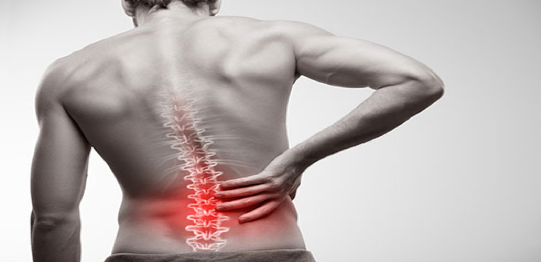Dispelling Common Back Pain Myths
Back pain is a huge cause of disability worldwide, and in most 1st world countries managing back pain costs the government more than cancer and diabetes combined. Most of these costs are related to treating people with ongoing back pain.
Despite this enormous increase in healthcare spending, the disability associated with back pain continues to increase. Today’s research shows that 84% of people worldwide will experience back pain at some point in their life and this is equally common across all age groups.
Scientific research in the area of back pain treatment has progressed in recent times and it is challenging widespread beliefs held about the condition that seems to plague so many people.
Below are 4 myths that are commonly reported about back pain:
1. I hurt my back, so I will probably always have a bad back from now on
While back pain can initially be very debilitating, stopping you from doing even the simplest task, most people make a very good and speedy recovery. Rapid improvements can be expected within a few weeks for most people, with continuing improvement over a few months. Most people can return to their work and hobbies relatively quickly despite still suffering from pain.
Only a very small number of people develop long-standing, disabling back problems. When you first experience back pain, research shows that some simple advice may help reduce your symptoms and the risk of injury happening again.
There are a number of factors which are associated with an increased risk of ongoing back pain, such as level of pain, distress, anxiety, and fear of movement. As a general rule of thumb, a clinical examination along with some simple advice is often enough to start the road to self-managed recovery.
2. I have back pain, so I should stay in bed and rest
In the first few days after the initial injury, avoiding aggravating activities may help to relieve pain, similar to pain in any other part of the body, such as a sprained ankle. However, there is now very strong evidence that keeping active and returning to your usual activities, including work and hobbies, is important in aiding recovery.
Prolonged bed rest can be unhelpful, and is often associated with higher levels of pain, poorer recovery and greater absence from work. In fact, it appears that the longer you stay in bed because of back pain, the worse the pain may become.
This increase in exercise and return to normal daily activity can be done gradually. Therefore, while performing some common tasks at work and home may initially be painful, early and gradual return to these tasks may be better for your back than prolonged rest.
3. My back pain is due to something being ‘out of place’
There is no evidence that back pain is caused by a bone or joint in your back being out of place, or your pelvis being out of alignment.
Common suggestions that back pain is caused by pelvic asymmetries, alterations in leg length, discs being out place and other structural issues, are largely incorrect.
A source of confusion for many people is the fact that they, or someone they know, may have been helped by a treatment that supposedly realigned or put their spine back into place. It is true that spinal manipulation (‘cracking your back’) can benefit back pain in the short-term but the reason for this is not realignment of something out of place. It is actually due to the ‘crack’ reducing the ‘activity’ of the nervous system and by restoring spinal movement, similar to the benefits of exercise.
To summarise, this piece neither advocates nor condemns the use of spinal manipulation, it can be an effective tool among many others to help reduce an individual’s back pain. However, any benefit from spinal manipulation is NOT related to putting anything back into place.
4. A scan reported I have a bulging disc, this will never improve and I will likely need surgery
It is one of the most infamous parts of the body as it frequently blamed for severe and unpleasant low back pain.
People continue to be sent for scans of their spine at an alarmingly high rate, and it is important for these scans to be interpreted accurately. Things that can be seen on scans include various changes in the shape of lumbar discs, such as disc bulges and disc protrusions.
Interestingly and opposed to popular belief, these changes in the disc can shrink and/or disappear without the need for surgery, with almost half (43%) of these protrusions completely resolving.
Bigger changes in the disc were usually more likely to resolve, such that having a large disc protrusion is not necessarily something to be concerned about.
Finally – and this is often confusing for patients – whether a disc continued to look mis-shapen or not on a scan was not related to whether a person’s back pain improved or not.
If you would like to find out more information about this subject please check out http://www.pain-ed.com/ website for useful resources.
References:
http://www.pain-ed.com/blog/2015/06/08/what-about-my-protruding-or-bulging-disc/
http://www.pain-ed.com/wp-content/uploads/2013/04/Back-Pain-Myths-Long-leaflet.pdf

